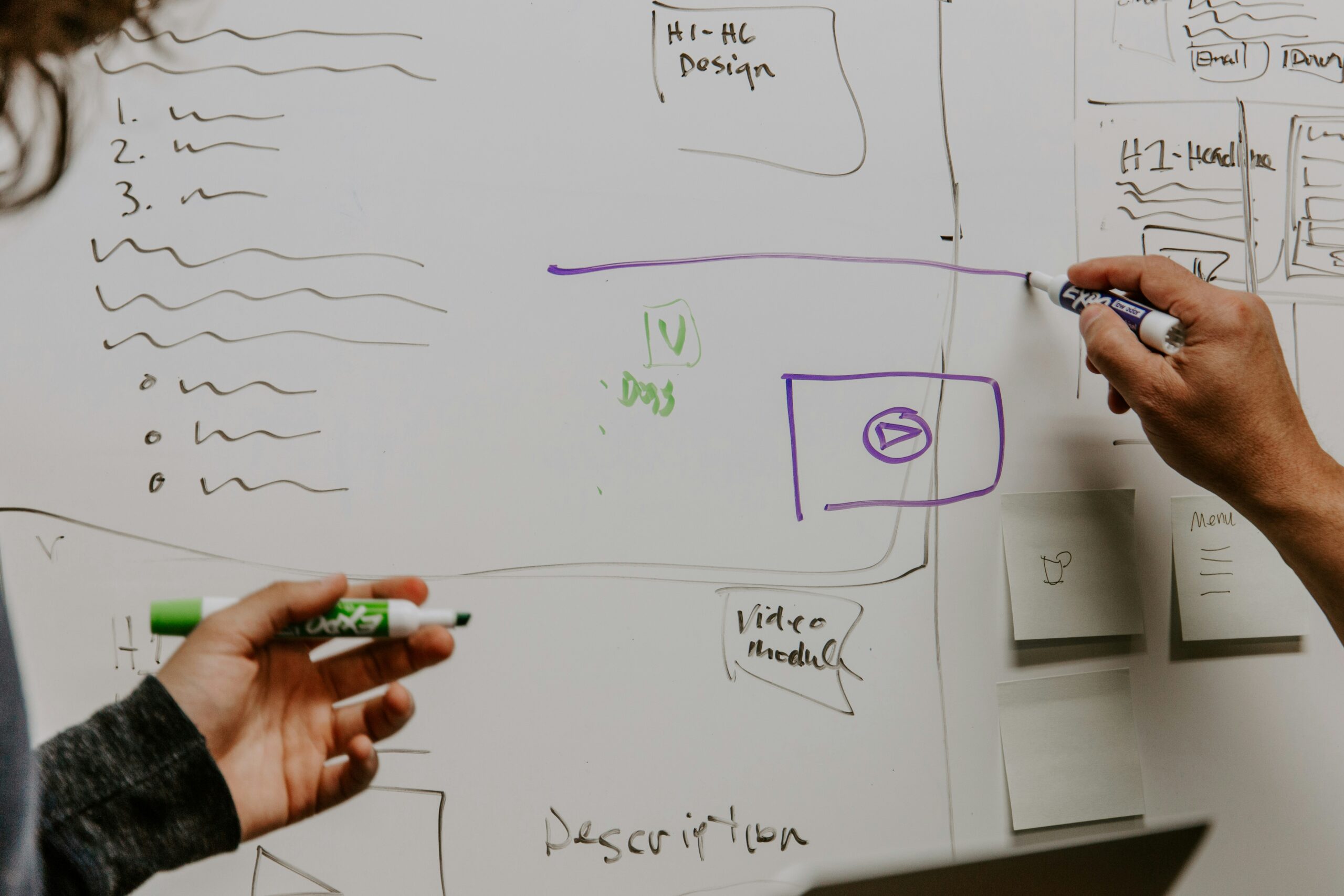A well-structured sales funnel is more than a marketing buzzword—it’s the foundation of every successful customer journey. From the moment a prospect discovers your brand to the point they become a loyal customer, each stage in the funnel requires tailored strategies that move them forward with intent. By combining marketing automation, personalized outreach, and smart segmentation, platforms like Nurture Machine help streamline this process, ensuring that leads are not just captured but nurtured and converted efficiently. This blog explores the key stages of the funnel and the tools and tactics that turn interest into action.
Key Takeaways
- The sales funnel maps the customer journey from awareness to retention.
- Lead generation, qualification, opportunity tracking, negotiation, and closing drive conversions.
- Personalization, marketing automation, and data-driven insights optimize funnel performance.
- Effective onboarding and retention strategies extend the funnel and maximize customer lifetime value.
What Are the Key Sales Funnel Stages and Why Do They Matter?

The sales funnel outlines how a lead progresses from discovery to conversion. Each stage represents a specific phase in the buyer’s journey, giving businesses insight into when and how to engage. Understanding these stages enables strategic automation, personalization, and follow-up that nurture prospects based on readiness. From attracting leads to retaining customers, each step is an opportunity to reduce friction and improve efficiency.
Awareness and Interest: Building Initial Engagement
At the top of the funnel, the goal is to attract attention through content, ads, or SEO. This phase sets the tone for trust-building. Automated tools can deliver relevant content based on behavior, guiding potential leads toward deeper interest. By providing targeted messaging from the first interaction, brands encourage continued engagement.
Consideration: Qualifying and Segmenting Leads
This stage involves sorting through engaged users to identify promising prospects. Automation helps score and segment leads based on interactions and demographics. Platforms can trigger drip campaigns or personalized messages that respond to browsing behavior, ensuring only qualified leads move forward with tailored communication.
Decision: Driving Conversions Through Personalization
In the final stages, personalization is key. This means delivering proposals, incentives, or reminders tailored to the lead’s needs. Tools can automate follow-ups and align sales messaging with CRM insights. A seamless handoff from marketing to sales increases the chance of final conversion while minimizing manual touchpoints.
How Does the Sales Funnel Guide Customer Journey and Conversion?

The funnel acts as a framework for automating and personalizing every stage of the customer journey. By mapping actions to each stage, businesses can design workflows that respond in real time to user behavior. This ensures a consistent, scalable process from first click to purchase, increasing both speed and success of conversions.
Mapping Actions to Funnel Stages
Automation platforms can track where users are in the funnel by analyzing clicks, email interactions, or page views. This makes it easier to tailor follow-ups or redirect users who stall. Segmenting prospects by behavior ensures the right message reaches the right person at the right time, streamlining the path to purchase.
Aligning Sales and Marketing Through Data
When sales and marketing teams share real-time funnel data, outreach becomes more coordinated. Shared tools can track campaign effectiveness, monitor conversion paths, and optimize messaging. This alignment allows both teams to focus efforts on nurturing leads with high intent, improving conversion rates across the board.
Enhancing Conversions With Predictive Insights
Using behavioral patterns, predictive analytics helps forecast the likelihood of a lead converting. These insights trigger targeted communications or offers automatically. By anticipating what a lead needs before they request it, businesses can reduce hesitation and move prospects more confidently toward action.
How Does Lead Generation Kickstart the Sales Funnel?

Lead generation introduces potential customers into the funnel and begins their journey toward conversion. It focuses on gathering information from interested users and engaging them with helpful, relevant content. Using automation and behavioral insights, businesses can collect leads and instantly begin nurturing them with intent-driven messaging.
Capturing Leads Through Strategic Touchpoints
Smart forms, landing pages, and gated content can capture user details when interest is high. Marketing tools automatically sort and store this data in a CRM for segmentation. This ensures that every new lead is instantly enrolled in a tailored journey, maximizing early-stage engagement.
Delivering Value With Personalized Content
Rather than generic follow-ups, lead generation efforts should immediately deliver content based on what triggered the user’s interest. If a user downloads a guide, an automation system can send related tips or case studies. Personalized value builds trust and increases the chance of continued interaction.
Syncing Channels for Unified Messaging
Automated platforms unify lead generation efforts across channels. Social media ads, emails, and landing pages work together, ensuring leads receive a consistent message. With centralized tracking, businesses can monitor the exact origin of each lead and adapt strategies based on which channels perform best.
How Is Lead Qualification Done to Identify Sales Opportunities?

Lead qualification ensures your sales team focuses only on prospects who are ready to buy. It uses behavioral signals and demographic data to prioritize high-intent leads. Automated scoring systems help categorize leads quickly, enabling tailored messaging and timely follow-ups. This not only improves conversion chances but also saves valuable team resources.
Automating Scoring With Behavioral Triggers
Behavioral triggers—such as email opens, link clicks, and time spent on site—can automatically increase a lead’s score. These interactions signal interest and readiness. Scoring rules in your automation system help flag leads that meet specific engagement thresholds, allowing for faster handoff to the sales team when intent is high.
Syncing CRM and Marketing Data
A synced CRM ensures marketing and sales share the same qualified lead data. When a contact reaches a score threshold, the system can trigger internal alerts, update sales stages, or auto-assign tasks. This ensures no promising lead slips through the cracks and keeps your pipeline flowing smoothly.
What Happens During the Sales Opportunity and Proposal Stages?

Once leads are qualified, the focus shifts to guiding them through the final decision-making steps. At this stage, businesses present compelling solutions, clarify product value, and handle objections. Marketing automation ensures timely, relevant follow-ups, while CRM tools keep all conversations aligned. These stages are crucial for sealing the deal and moving leads to conversion.
Delivering Personalized Offers at the Right Time
Using automation, you can send proposals that align with a lead’s specific needs, interests, and buying signals. Whether triggered by a score threshold or repeated visits to pricing pages, these offers can include limited-time discounts or curated product bundles—delivered when the lead is most likely to convert.
Nurturing High-Intent Leads With Follow-Ups
Sales opportunities are most effective when nurtured consistently. Automated email workflows can keep leads engaged by sending product comparisons, FAQs, or testimonial content. This drip-style follow-up maintains momentum and gives prospects the reassurance they need to finalize their decision.
Aligning Sales Touchpoints With CRM Insights
CRM integration ensures that your sales team has a full view of a lead’s journey—from first touch to current opportunity stage. This allows for personalized outreach based on behavior, previous interactions, and content consumed. The result? Smarter sales conversations and more closed deals without guesswork.
How Do Negotiation and Closing Drive Funnel Conversion?

At the final stage of the funnel, negotiation and closing tactics focus on removing the last barriers to purchase. Prospects are already warmed up, so it’s all about confirming value, building confidence, and making the path to conversion seamless. Automated follow-ups and CRM-driven insights ensure that no opportunity slips through the cracks.
Automating Personalized Final-Pitch Sequences
Automation platforms like Nurture Machine allow for timed outreach once a proposal has been delivered. You can trigger reminder emails, personalized benefit summaries, or objection-handling messages based on lead activity. This removes friction and makes it easier for leads to move forward without unnecessary delays.
Supporting Sales With Targeted Closing Assets
Equip your sales team with content libraries that include closing-stage templates, success checklists, and guided scripts. With CRM-linked access, they can instantly pull up the most relevant materials for each lead. This boosts confidence during negotiations and ensures consistent messaging across every closing call.
Tracking Deal Readiness With CRM Tags and Signals
Nurture Machine’s CRM integrations help track final-stage engagement—like document opens, repeated pricing page visits, or response delays. These signals trigger internal alerts or tailored outreach, letting your team jump in with exactly the right message to secure the conversion at the perfect time.
Frequently Asked Questions
What is a sales funnel, and why is it important?
A sales funnel maps the entire journey a prospect takes from first interaction to final conversion. Each stage—awareness, engagement, qualification, and purchase—offers insight into user intent. By organizing this journey, businesses can design more effective touchpoints, address objections early, and guide leads more efficiently toward conversion, improving ROI and customer retention.
How do marketing automation tools enhance lead generation?
Marketing automation tools deliver timely, relevant content to prospects based on real-time behavior. Platforms like Nurture Machine automate follow-ups, segment audiences by behavior or demographics, and trigger campaigns based on specific actions. This ensures every lead receives a personalized experience while reducing manual effort and improving lead quality.
What role do buyer personas play in optimizing sales funnels?
Buyer personas help businesses understand their audience’s needs, preferences, and pain points. With these insights, marketers can create targeted messages that resonate more deeply. Nurture Machine’s segmentation features allow brands to align campaigns with persona-driven attributes, ensuring that content and offers feel tailored at every stage of the funnel.
How can businesses measure the success of their sales funnel?
By tracking metrics like website engagement, lead conversion and qualification rates, opportunity-to-deal ratios, closed won rates, and customer retention figures using CRM systems and analytics tools.
What strategies are most effective for customer onboarding and retention?
Personalized onboarding sequences, welcome emails, automated check-ins, and value-driven content keep customers engaged from the start. By using behavior-based triggers, companies can maintain a steady flow of communication and support.
Conclusion
In conclusion, a well-optimized sales funnel is fundamental to converting prospects into loyal customers. Each stage—from awareness and lead generation to negotiation and closing—is vital in shaping the customer journey. Personalization, data-driven insights, and marketing automation work together to ensure that every interaction resonates with potential buyers. By continuously measuring and refining each phase, businesses can create a sustainable framework that not only improves conversion rates but also builds lasting customer relationships, enabling long-term success in a competitive marketplace.






